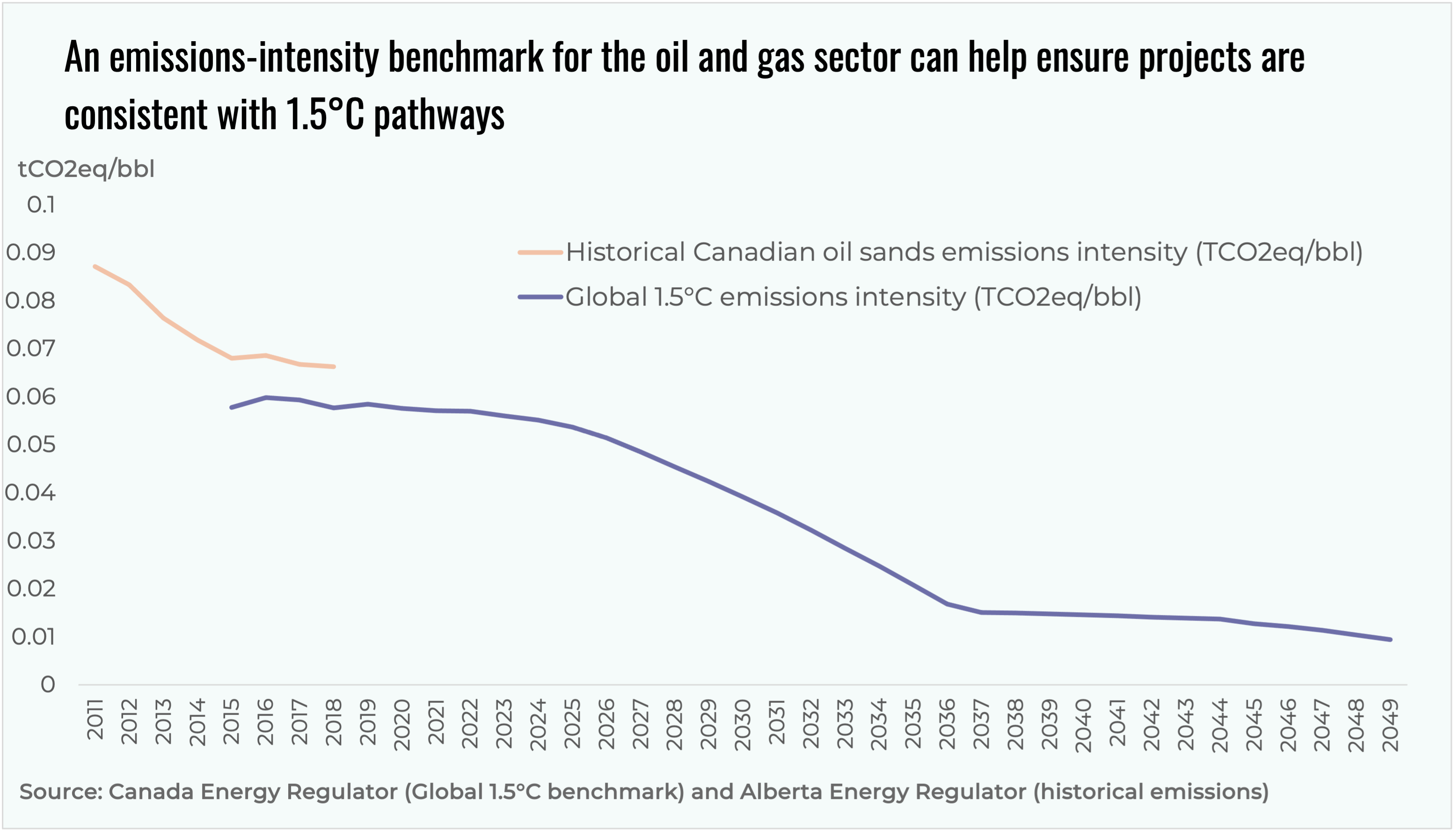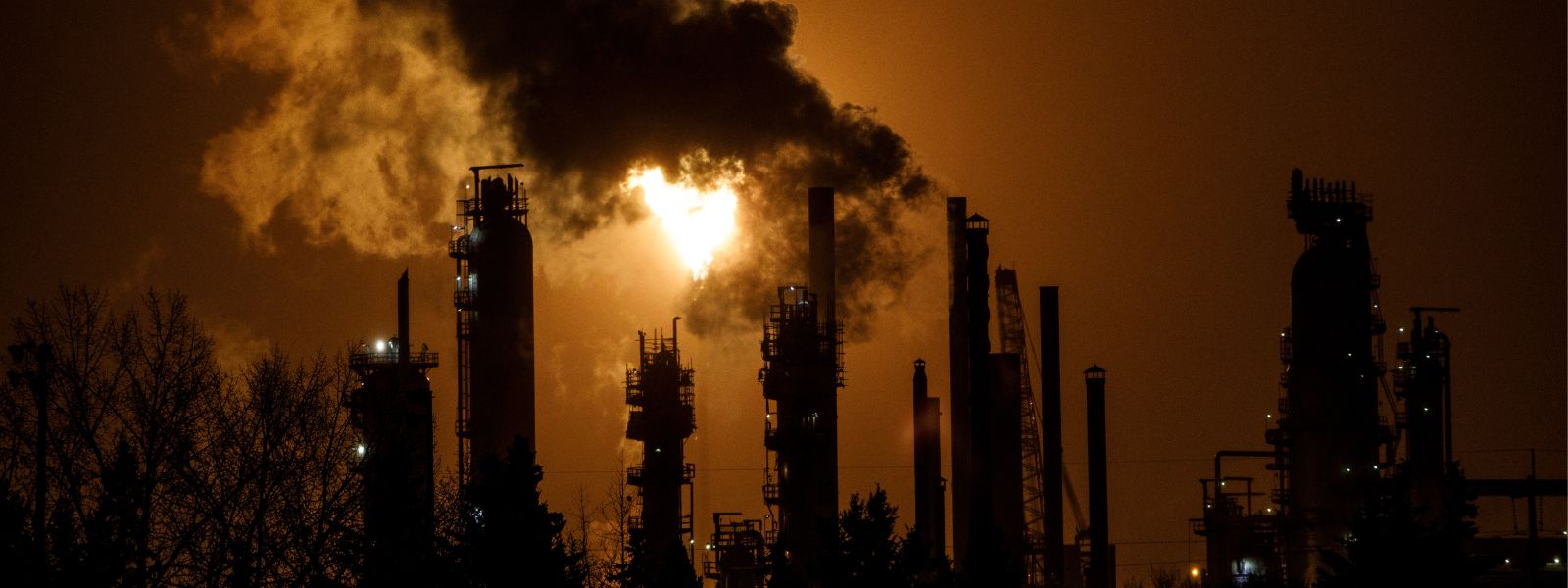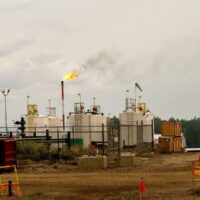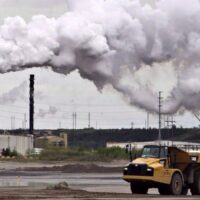This is the first article in a series of three on Canada’s climate objectives and the oil and gas sector, originally published in Policy Options.
A new analysis by the Canada Energy Regulator shows that heavy-polluting industries need to make transformational investments if Canada is to succeed in building a net-zero future. These investments are also imperative to remaining competitive in a global low-carbon economy.
Sectors such as oil and gas, mining and manufacturing are responsible for the bulk of Canada’s emissions but are also a major source of the country’s jobs and prosperity. It’s therefore critical to align the activities of these companies with the goal of reducing greenhouse gas emissions.
One way to incentivize companies to do that is through the newly proposed climate investment taxonomy developed by the federal government’s Sustainable Finance Action Council (SFAC).
Creating a standardized framework
Like other taxonomies that codify and label individual parts of complex systems (e.g., biology), the climate investment taxonomy would create a standardized framework to help financial markets assess whether projects and investments are genuinely aligned (or not) with Canada’s climate goals.
Developing a climate investment taxonomy has several benefits. For companies looking to build new projects, it can help them get better financing terms through “green bonds” and similar financial instruments. For buyers of corporate debt, it can ensure that the relevant projects genuinely align with the country’s climate goals, which reduces both the risk of greenwashing and the risk of holding assets that unexpectedly lose value or become stranded in transition.
It would also be a voluntary framework, giving corporate issuers a choice in how they raise funds.
The framework – supported by the country’s 25 largest financial institutions and a broad coalition of domestic and international organizations – outlines two labels that would help projects secure lower-cost funding.
The “green” label would apply to projects – such as wind and solar, electric vehicles, clean hydrogen, afforestation projects and electricity transmission infrastructure – that are intuitively aligned with a net-zero future.
The “transition” label would be reserved for projects that would lead to significant emissions reductions from high-polluting sectors, such as steel, cement, aluminum, chemicals, and oil and gas.
The high stakes with oil and gas
Of all the sectors eligible for a “transition” label in this framework, the inclusion of oil and gas has sparked the most concern – for good reason.
The upstream production of oil and gas in Canada accounts for more than one-quarter of its total greenhouse gas emissions. Burning fossil fuels is an even bigger source of emissions but because Canada exports most of its oil and gas, these emissions show up on other countries’ accounting sheets. The taxonomy’s success hinges on its science-based credibility, so including anything about oil and gas raises significant risk.
Yet it is exactly because of the sector’s high emissions profile that mobilizing capital to reduce upstream oil and gas emissions in the coming decades is essential. Without these investments, Canada is unlikely to achieve its climate targets.
The Canadian Climate Institute – through ongoing consultations with a broad range of stakeholders and Indigenous rights holders – is exploring what a credible and science-based framework to decarbonize the oil and gas sector could look like.
No other taxonomy in the world has developed this type of framework, so the stakes are high. If done well, a Canadian framework could serve as a template for other countries that are major oil and gas producers looking to accelerate investments to cut emissions.
We propose two big requirements for oil and gas projects to become eligible for a “transition” label under the taxonomy. These build off the original taxonomy roadmap, proposed in March by the SFAC.
Setting targets and making credible plans
The first is a set of general requirements that individual companies would need to satisfy. This would require oil and gas companies to have credible net-zero targets that account for emissions across their entire supply chain, including combustion emissions from their customers.
It would also require that companies disclose plans on how they will achieve these targets, including plans to transition to other, less emission-intensive lines of business.
The second big component is a set of specific requirements at the project level. This step assesses whether the characteristics of a specific project – whether it’s the installation of carbon capture and storage, or electrifying a facility’s operations – align with representative pathways consistent with keeping the increase in global average temperatures below 1.5°C above pre-industrial levels.
These specific requirements include two separate criteria. The first is that projects must reduce emissions from existing production and projects. The international climate science is clear that global consumption of oil and gas must decline sharply between now and mid-century to stay consistent with the 1.5°C target, which means no investments in new production.
To define an “existing” oil and gas project, we propose building on formal definitions and standards used by the United Nations and the International Energy Agency. The proposed criteria for existing projects are listed in the table below, differentiated by oilsands, and conventional oil and gas projects.
| Existing oilsands projects | Existing conventional oil and gas projects |
|---|---|
| – A field where extraction and production are already taking place; AND, – Where capital funds have already been committed and implementation of the development project or mining operation is underway (where a final investment decision is made by a specified date); AND, – Where any project expansions (if relevant) do not require new major infrastructure (e.g., gathering lines, processing facilities, upgraders, etc.) | – A field where extraction and production are already taking place; AND, – Where any new pads and wells do not require new major supporting infrastructure (e.g., gathering lines, processing facilities, upgraders, etc.) |
The second major criterion is the extent to which the project reduces greenhouse gas emissions. Fundamentally, to earn the “transition” label in the taxonomy, we must ensure that each project is consistent with 1.5°C pathways.
Here, we propose using an emissions-intensity benchmark for the oil and gas sector based on representative 1.5°C scenarios. The figure below shows how this type of benchmark could work in practice, using the emissions-intensity benchmark based on the Canada Energy Regulator’s new Global Net Zero Scenario, along with the historical emissions from Canadian oilsands. A project would need to show how specific investments will keep it below this benchmark through time.

Putting each of these requirements together would set a high bar for what types of oil and gas projects would qualify for the “transition” label. It would ensure that only those projects that make significant emissions reductions are eligible. It would also ensure that the companies operating these projects show how specific investments fit into their broader strategy to achieve net-zero emissions by mid-century.
It’s the combination of company-level and project-specific requirements that safeguard the taxonomy and financing entities from supporting projects that make it harder or more expensive for Canada to reduce emissions in the future.
This approach also recognizes that global demand for oil and gas will not drop overnight and that Canada will continue to be a major producer. But as the transition accelerates – driven by increasingly stringent climate policy, cheaper alternatives to fossil fuels, and large shifts in consumer and financial markets – producers with the lowest costs and lowest carbon emissions will face less transition risk.
Reducing upstream emissions in the sector is essential for achieving Canada’s domestic climate targets and securing its economic competitiveness.
Yet these proposed requirements are only a starting point. Developing official criteria and thresholds for a national taxonomy ultimately requires the federal government to create a new independent institution to provide the resources and governance structure required to tackle these complex issues, as recommended in the SFAC taxonomy roadmap report.
It also requires integrating safeguards for other important objectives, such as climate adaptation, clean air and water, and the recognition of Indigenous rights and title.
The evidence is clear: getting on a net-zero pathway requires transformational investment by Canada’s oil and gas industry. Creating a climate investment taxonomy in the coming months can help mobilize capital toward these ends because investors ultimately need confidence about whether specific projects are genuinely aligned with Canadian and global climate goals.
The approach outlined above could provide a credible, science-based path for doing so and give the entire initiative a running start.







